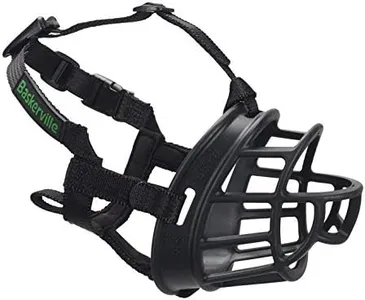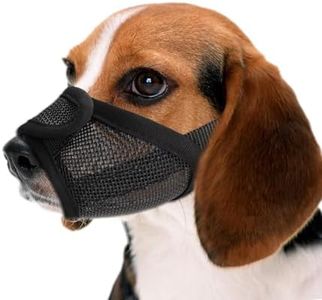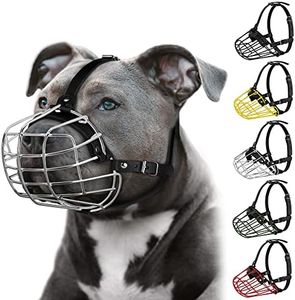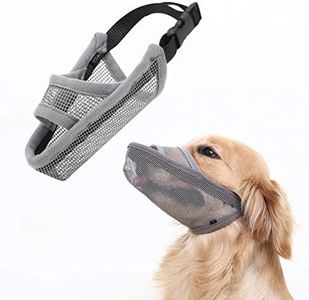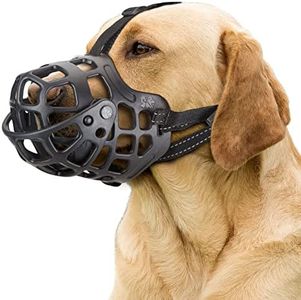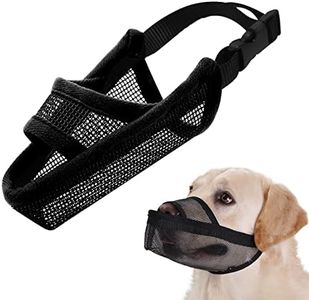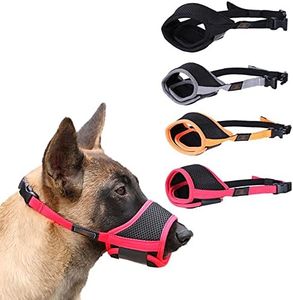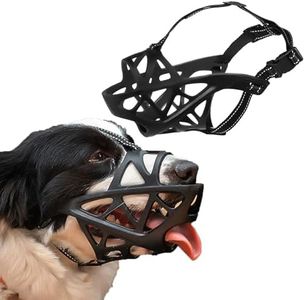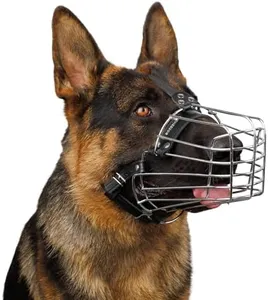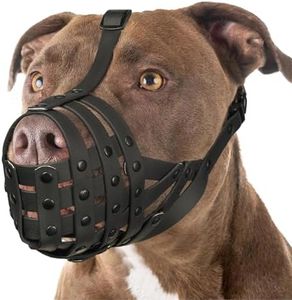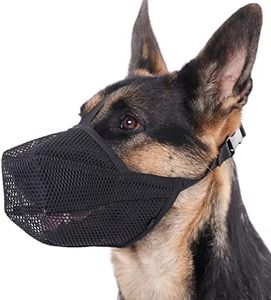We Use CookiesWe use cookies to enhance the security, performance,
functionality and for analytical and promotional activities. By continuing to browse this site you
are agreeing to our privacy policy
10 Best Dog Muzzle
From leading brands and best sellers available on the web.Buying Guide for the Best Dog Muzzle
Choosing the right dog muzzle is important for both your dog's comfort and safety, as well as for the safety of others. When picking a muzzle, it's not just about preventing unwanted behaviors; it’s also about ensuring your dog can breathe, pant, and even drink while wearing it, depending on the type. A well-fitted muzzle can help in training, vet visits, and public outings, so understanding the options is key to making the best decision for your dog’s needs.Muzzle TypeThere are several main types of dog muzzles: basket muzzles, soft muzzles, and occlusion muzzles. Basket muzzles are typically made from plastic, rubber, or metal and allow your dog to open its mouth, pant, and sometimes drink, making them good for longer wear and safety in public. Soft or fabric muzzles wrap around the dog’s snout and close it, preventing biting but also restricting panting, which is only suitable for short periods, like vet visits. Occlusion muzzles may seem secure but should be used briefly, as they are even more restrictive. To choose the right one, think about how and where you'll use the muzzle; basket types are generally best for any regular or extended use, while soft versions fit occasional, short-term needs.
MaterialThe material of a muzzle affects both comfort and durability. Common materials include plastic, metal, rubber, fabric, and leather. Plastic and rubber are lightweight and flexible, making them comfortable and suitable for most dogs; metal is very strong but heavier and best for very determined dogs that might try to break out. Fabric is soft but generally less sturdy and more restrictive, so it's best for very short use. Leather can be comfortable and stylish, but requires maintenance to prevent cracking. Consider your dog’s temperament, tendency to try to remove the muzzle, and the situations in which it will be worn to help you decide.
Size and FitGetting the right size and fit is crucial for your dog's comfort, safety, and effectiveness of the muzzle. Muzzles come in different sizes, and you usually need to measure your dog’s snout length and circumference to choose the correct one. Too tight, and it can hurt or stop your dog from breathing or panting; too loose, and your dog might take it off or still be able to bite. When picking, always measure carefully and follow the manufacturer’s fitting guidelines, and check that your dog can open its mouth a bit to pant, especially in warmer weather or for exercise.
VentilationVentilation describes how well air flows through the muzzle. This is very important because dogs regulate their body temperature by panting. Basket muzzles often have lots of openings for airflow, making them better for longer wear. Soft muzzles tend to cover more of the snout, which can limit airflow. You should look for a muzzle that allows your dog to breathe and pant freely, especially if your outings are longer or in warm environments.
AdjustabilityAdjustability refers to how well you can fine-tune the fit of the muzzle using straps or buckles. A good muzzle should have secure but comfortable adjustment points, often around the neck and head. This ensures the muzzle stays in place and can be customized to fit your dog’s head shape. Pick a model that you can easily adjust so it fits snugly but isn’t too tight, as a poor fit can cause chafing or slipping.
Purpose/Intended UseWhy you're using a muzzle is critical to selecting the best one. Some are designed for preventing biting during grooming or vet visits, others for managing reactivity during walks, and some for behavior training or public safety. A basket muzzle is better for longer walks, exercise, or training, as it lets the dog pant and drink, while a soft muzzle is more for short-term use in specific scenarios. Think carefully about your main reason for using a muzzle, as this will help you focus on the features that matter most for your situation.

